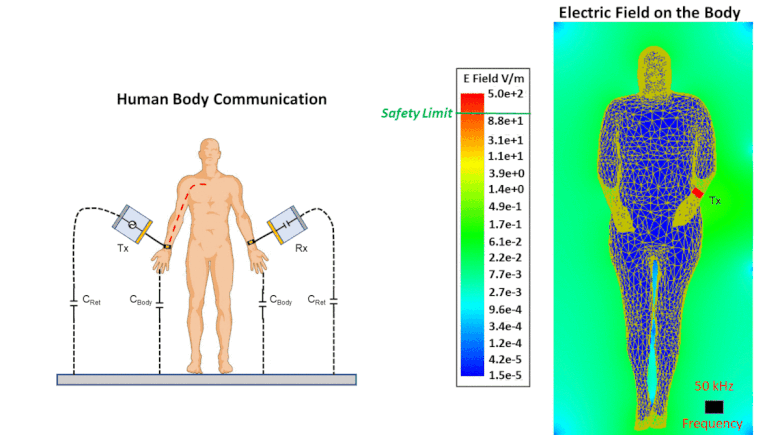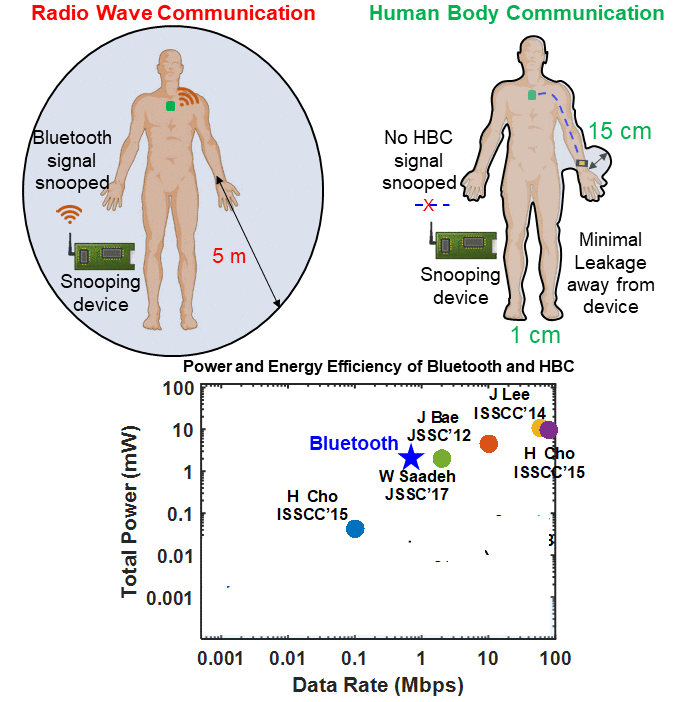
Human Body Communication (HBC) utilizes the human body as a communication medium between devices on and around the body. The increased energy-efficiency and enhanced physical security due to signal confinement makes HBC a promising alternative to radio wave-based communication like Bluetooth. However, HBC requires tiny amounts of electrical signals to be sent through the body. This calls for a thorough analysis of the safety aspect of HBC. This paper provides a safety analysis of the two most popular modalities of HBC, namely Capacitive and Galvanic HBC, for the first time. Circuit and Finite Element Method (FEM) based simulations are carried out to determine the current density, electric field, magnetic field intensities from HBC at different frequencies and compare it with the established ICNIRP, IEEE, NIOSH safety standards. Simulation results show that capacitive HBC operates at least in an order of magnitude lower current or field density compared to the safety limits, anywhere on the body, for a wide range of frequency from 10kHz to 1GHz. However, Galvanic HBC can result in field intensities higher than the safety limit, close to the point of excitation, at certain frequencies. A study is carried out among a set of 7 subjects to determine the effect of Capacitive HBC on vital parameters such as Mean Arterial Pressure, Respiration Rate, Peripheral Capillary Oxygen Saturation, Temperature. Measurements carried out multiple times over the duration of a month shows no statistically significant change in any of the vital parameters of the subjects while wearing an HBC enables device compared to baseline measurements without any device, supporting the results of the simulation study.

